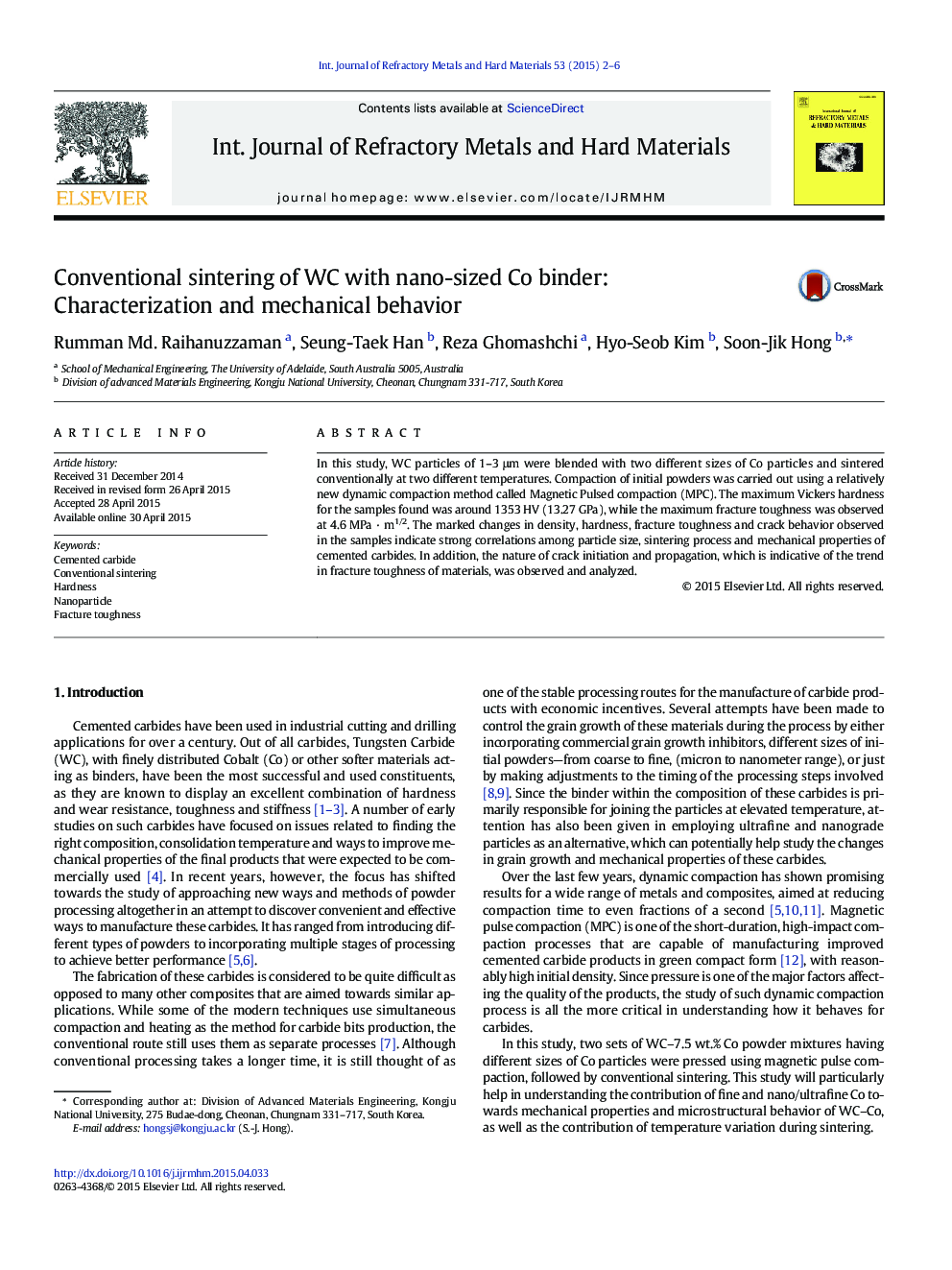| Article ID | Journal | Published Year | Pages | File Type |
|---|---|---|---|---|
| 1602701 | International Journal of Refractory Metals and Hard Materials | 2015 | 5 Pages |
•Effect of conventional sintering along with dynamic compaction on mechanical properties was studied.•Crack analysis, grain size and fracture toughness were analyzed to discuss mechanical properties.•Comments were added to clarify the relationship between hardness behavior and fracture toughness of carbides.•Overall, microstructural characteristics were analyzed to explain overall changes in properties in this study.
In this study, WC particles of 1–3 μm were blended with two different sizes of Co particles and sintered conventionally at two different temperatures. Compaction of initial powders was carried out using a relatively new dynamic compaction method called Magnetic Pulsed compaction (MPC). The maximum Vickers hardness for the samples found was around 1353 HV (13.27 GPa), while the maximum fracture toughness was observed at 4.6 MPa · m1/2. The marked changes in density, hardness, fracture toughness and crack behavior observed in the samples indicate strong correlations among particle size, sintering process and mechanical properties of cemented carbides. In addition, the nature of crack initiation and propagation, which is indicative of the trend in fracture toughness of materials, was observed and analyzed.
